A Photographer's Guide to Berlin
A city that loves photography but is shy in front of the camera. Here’s how to shoot it anyway.
This guide isn’t set in stone. Berlin is always changing, and so is its photographic landscape. I’ll be updating this periodically with new spots, hidden gems, and any shifts in the scene. If you have recommendations, discoveries, or just want to rant, then leave a comment.
Like much else about this city, Berlin's relationship with photography is complex. It thrives on creativity but doesn't always welcome the camera. A city of grit and contradiction—yet always more than meets the eye. Berliners are instinctively wary of being photographed, yet few places celebrate the medium as passionately as this city.
I moved to Berlin two and a half years ago from Montreal, and photography has been key to making sense of this vast metropolis. Yet, I'd be lying if I said it was an easy place to photograph. The city resists being captured, and I'm still searching for my photographic voice here. Adjusting my eyes from a North American visual language remains an ongoing challenge. But photography has been a way to push beyond the obvious, explore lesser-known parts of Berlin, and understand this fascinating place.
What This Guide Is and Isn't
This isn't a generic travel guide. Instead, it's an insider's look at Berlin as both a subject and a hub for photography, from its best shooting locations to its rich photographic culture. It's geared toward visitors and newcomers, with a particular focus on documentary and street photographers—regardless of what camera you use.
Where to Photograph in Berlin
Mitte
Mitte is touristy, polished, and sanitised. However, there's plenty to work with if you're after brutalist structures, grand architecture, or Berlin Wall history. It's Berlin's central district, encompassing parts of the former East and West, and home to most of the city's major landmarks—perfect for some Martin Parr-style street shots of tourists, locals, and the occasional oddball.
Alexanderplatz—the commercial heart of former East Berlin— a fine spot for candid street photography, thanks to its wide open space and the iconic Fernsehturm (TV Tower) looming overhead.
Brandenburg Gate, Checkpoint Charlie, and the Bundestag – Classic, if overdone, Berlin backdrops. But, I enjoy taking photos of tourists taking photos in these spots.
Potsdamer Platz – Rebuilt on a former no-man's land between East and West Berlin, it's a busy intersction with geometric glass towers; a modern but soulless aesthetic.
Berlin Hauptbahnhof (central station) – An incredible space; one of my favourite railway stations anywhere in the world, with fantastic light and shadows at certain times of day.
Kreuzberg
Probably the Berlin you imagined in your mind. It's quirky, messy, full of layers, döner kebabs, and graffiti. Kreuzberg, a district with deep Turkish roots, has long been a centre of Turkish life in Berlin. However, it's also one of the city's most rapidly changing areas, with gentrification creeping in, especially along the canal.
Oranienstraße and Kottbusser Tor – Chaotic but perfect for street photography, packed with a mix of punks, hipsters, old Berliners, and expats.
Görlitzer Park – The place for capturing Berlin's rougher side, but I wouldn't recommend going in after hours—it's essentially an open-air drugs market, and muggings (or worse) regularly occur.
Kotti high-rises – If you're after cyberpunk/Blade Runner vibes, this is one of the best spots in the city for that kind of aesthetic.
Treptower Park Soviet War Memorial – Not acutally in Kreuzberg, but close by. This is an immense, imposing memorial in honour of the fallen Soviet soldiers of WWII that makes for striking compositions.
Prenzlauer Berg
Once the centre of East Berlin's counterculture, Prenzlauer Berg has become the city's gentrification poster child. It's where financially comfortable hipsters go to start families—think leafy streets, café culture, and beautifully restored Altbau (pre-WW2) apartment buildings.
Eberswalder Straße and Schönhauser Allee – Both these U-Bahn stations offer fantastic compositions, with Chicago-style raised U2 trains gliding above the streets while yellow trams pass below.
Mauerpark – A pleasant yet quirky Sunday afternoon hangout with plenty of candid street photography opportunities, especially at the flea market or the outdoor karaoke sessions.
Kollwitzplatz – For something different, the area around here in the early morning has a kind of empty, eerie calm.
Friedrichshain
Think of it as the love child of Kreuzberg and Prenzlauer Berg. Friedrichshain is a fascinating mix of socialist architecture, punk aesthetics, and Berlin's iconic nightclubs (hello, Berghain). Picture leafy Altbau streets and squares, imposing neoclassical socialist apartments, and Berlin's post-industrial clubbing landscape—all mashed together in one district.
Karl-Marx-Allee – You'd be forgiven for thinking you were in Moscow. Built in the 1950s as East Berlin's showpiece boulevard, this striking corridor of neoclassical Stalinist architecture is one of the best places in Berlin for DDR-era urban photography.
Boxhagener Platz and its backstreets – Once the heart of Friedrichshain's punk/alternative scene, though these days you'll need to dodge the Airbnb crowd to find remnants of its grittier past. Still, it's a very pleasant area.
Revaler Straße (RAW-Gelände) – If you want stereotypical gritty Berlin with a bit of sleaze, this post-industrial, graffiti-covered complex has it—but it feels more like Berlin cosplaying itself. It's less of a raw underground spot these days and more of a show for tourists.
Ostkreuz – On a good day, you get fantastic light at sunrise and sunset through the windows on the upper platform, making it a superb spot for street photos.
East Side Gallery – The most famous stretch of the Berlin Wall is covered with murals from artists around the world. Don't expect to get original or unique photos here, but you should check it out so it's ticked off your list.
Neukölln
Where old Berlin collides with new-wave expat hipsterdom and large Turkish and Syrian communities—a district in flux, balancing run-down charm, creeping gentrification, and a restless energy that makes it fascinating to photograph. Edgy street scenes, late-night city life, hidden courtyards. It is one of my favourite neighbourhoods for night photography—think flickering neon, smoky shisha bars, and 24-hour spätis (late shops).
Hermannstraße – Relentless urban sprawl, a little gritty, somewhat overwhelming—perfect for capturing Berlin's rawer side.
Körnerpark – A surprisingly elegant garden square. This hidden gem is a strange contrast to the district's usual chaos with its formal gardens and grand stone staircases. It almost feels like you’re in France.
Tempelhofer Feld – Berlin's most surreal open space, a decommissioned airport turned public park. Its vast, empty runways are great for wide, cinematic shots, and at sunset, the mix of skaters, kiteboarders, and picnic-goers makes for some striking silhouettes.
Wedding and Gesundbrunnen
Often overlooked, Wedding and its neighbour Gesundbrunnen offer a mix of unpolished city life, brutalist architecture, and surprising pockets of history. It's less curated than Kreuzberg or Friedrichshain, but for those willing to look beyond the surface, there's plenty to photograph—from postwar concrete to hidden green spaces.
Come here for: Brutalist structures, everyday Berlin, an underrated mix of old and new.
Plötzensee – A surprisingly tranquil lake in the middle of the city, offering a contrast to the surrounding urban landscape.
Müllerstraße and Leopoldplatz – It feels like Berlin before the wave of hipster cafés and high rents—unpretentious, lived-in, and full of movement. Be careful around Leopoldplatz, though; in the past few years, it has turned into an open-air crack cocaine market and, with ensuing crime.
S-Bahn tracks and postwar concrete – A great area for those who love infrastructure, angular architecture, and overlooked spaces.
Gesundbrunnen Bunker and Humboldthain Flak Tower – Hidden within Humboldthain Park, these WWII-era air raid bunkers and the massive flak tower ruins are some of Berlin's most surreal historical relics. The view from the top of the flak tower is one of the best in the city.
Gesundbrunnen and Osloer Straße U-Bahn Stations – Classic 1970s West Berlin aesthetics — tile walls, underground tunnels, and strong leading lines for compositions.
Lichtenberg and Marzahn
If you're looking for DDR-era architecture, vast Plattenbau (prefabricated concrete) estates, and an atmosphere that feels like East Berlin never entirely left, Lichtenberg and Marzahn are where to go. Sometimes dismissed as bleak or dull, I find these areas endlessly fascinating — a treasure trove for fans of Brutalism and the visual remnants of the DDR.
Come here for: Socialist-era Plattenbau, large-scale urban photography, and Berlin's most overlooked spaces.
Marzahn-Hellersdorf – Berlin's largest Plattenbau estate, a concrete jungle of repetitive high-rises. It's surreal, imposing, and best photographed in dramatic light.
Lichtenberg's Industrial Fringe – Think abandoned factories, forgotten infrastructure, and an eerie, post-industrial aesthetic; it's a peculiar, unsettling yet fascinating area.
Stasi Museum – Housed in the original Stasi headquarters in Lichtenberg, this museum is a time capsule of totalitarian bureaucracy. The museum has kept the offices and private quarters of the Stasi top brass completely intact — right down to the furniture.
Dong Xuan Centre – A sprawling Vietnamese wholesale market that feels like you've stepped into a slice of Hanoi. Hidden inside massive warehouse halls, you'll find endless stalls selling everything from fresh produce and street food toclothing, electronics, and random household goods. The neon signs, narrow aisles, and organised chaos make it an incredible location for documentary-style photography. You can read my full Substack post on this weird and wonderful treasure trove of a market below:
Inside the Vietnamese Megamarket Changing East Berlin
Migration stories in Europe usually follow a familiar script: arrivals in London, Paris, maybe Berlin – but rarely Lichtenberg. Yet long before reunification, a quiet current of Vietnamese life was flowing through East Germany. On the edges of East Berlin, you’ll find something unexpected: phở stalls, fabric shops, and the low murmur of a community that…
Reinickendorf
This corner of northwest Berlin feels like a relic of a vanished era, a district still carrying the eerie, liminal energy of the Cold War era. Unlike the chaotic urban sprawl of Kreuzberg or the grand old-money charm of Charlottenburg, Reinickendorf is quiet, mid-century, and strangely out of sync with the rest of the city. It's where postwar modernist housing blocks, fading neon signs, and empty suburban streets feel trapped in another time, a reminder of how West Berlin once stood isolated behind the Wall. Photographers drawn to haunting, still atmospheres, mid-century aesthetics, and a sense of Berlin's forgotten edges will find Reinickendorf rich in material.
Best for: Mid-century modernist architecture, eerie Cold War aesthetics, and quiet, liminal urban spaces.
Tegel and Alt-Tegel – A mix of stale suburban calm and eerie stillness, this area feels almost cinematic, like a spy thriller that never ended.
Märkisches Viertel – One of West Berlin's most ambitious 1960s social housing projects, now a time capsule of mid-century urban planning. Rows of brutalist high-rises, empty green spaces, and forgotten corners make it an underappreciated setting for dystopian-feeling urban photography.
Reinickendorf's Neon Relics – Scattered throughout the district, you'll find fading neon shop signs, empty storefronts, and gas stations with signage from another era, giving parts of Reinickendorf an almost David Lynch-style dreamscape quality.
Haselhorst and Siemensstadt – This area is ideal for exploring Berlin's lesser-known modernist architecture, a mix of industrial complexes, early 20th-century workers' housing, and forgotten infrastructure.
Gear and Film Stores
Foto Impex — Mitte
For anyone who develops their own film, Foto Impex is a one-stop shop for developers, stop baths, and fixers; it has all you need to start developing your film at home. It also tends to have some of the most competitive prices on film stock. From experience, their selection is excellent, though I haven't personally tried their development and scanning services. As far as I'm aware, it's the only place in Berlin where you can buy Valoi's home-scanning peripherals.
Foto Kotti — Kreuzberg
You won’t find anywhere cheaper to develop C41 negatives or E-6 slide film at €2.50 and €5 a roll respectively. What’s more, they’re extremely fast with their turn around times. I’ve heard from others that they ocassionally mess things up, but I’ve not experienced this. Scanning costs, however a bit pricer than other options, but if you scan at home like me, then I think Foto Kotti is the way to go.
Click & Surr — Mitte
Stepping into Click & Surr feels like going through a time machine. The shop has a massive selection of analogue camera equipment and a decent choice of film. They also offer repair services for cameras and projectors. Occasionally, they'll sell newly expired packs of Portra 160 at an appealing discount.
Safelight — Prenzlauer Berg
Safelight offers the best balance between price and quality for film development and scanning. A 35mm C41 colour development with scans costs €10, with slightly higher prices for black and white, slide, or ECN-2 processing. They also sell new and used film cameras and lenses, plus an excellent selection of zines and photobooks.
However, turnaround times can vary, and you might have to wait between 4–7 days before getting your scans and negatives back. If you're in a hurry, it's worth checking their current processing times before dropping off your film.
Foto Meyer — Schöneberg
A fantastic all-around, independently owned camera store in a more polished part of Berlin. This would be my go-to if I wanted to buy anything from Fujifilm, Nikon, Canon or Sony. Foto Meyer also has a extensive inventory of used digital and film cameras and lenses. They also offer printing services at fair prices, making them a reliable choice for photographers looking to print their work.
Foto Leistenschneider — Charlottenburg
A similar kind of place to Foto Meyer, Foto Leistenschneider offers all the camera brands and accessories you'd expect.
Leica Store Berlin — Charlottenburg
Smack in the middle of Berlin's fanciest quarter, the Leica Store in Berlin caters to those with deep pockets. But despite the intimidating red dot, the sales staff are surprisingly friendly once you start talking to them—and can even be unexpectedly generous. The last time I was there, I bought a camera strap and a copy of the Leica magazine, and they threw it in for free. Unlike some Leica stores, this one lacks a gallery space and is fairly small. Still, you'll find a wide range of used cameras and lenses, making it worth a visit even if you're just browsing.
DM — Pharmacy Chain
You'll find DM stores all over Berlin. It's not a photography store per se, but they offer the best price on Kodak Gold 200 anywhere. A three-pack of 36-exposure rolls costs €23, making it the cheapest option for buying colour negative film I know of in Berlin. It's also a useful spot for quick and cheap 10 × 15 cm prints if you need physical copies urgently.
Fotopioniere — Friedrichshain
The best spot in Berlin for stocking up on fine art photo paper. Fotopioniere’s The staff at Fotopioniere are highly knowledgeableand can help you find what you're looking for. They stock premium brands like Hahnemühle, Canson, and Ilford, plus camera accessories such as tripods, lighting, and studio equipment.
Film Speed Lab — Bötzowviertel
Run by a group of Ukrainians who relocated from Kyiv to Berlin, Film Speed Lab lives up to its name—it's the place to go if you want next-day development and scans. You'll pay more than elsewhere (€13 for C41 development and a standard-resolution scan). Still, the quality and fast turnaround could make it worth the price. From my experience, they've been consistently reliable and professional.
Photobook and Magazine Stores
Bildband — Prenzlauer Berg
Run by photographer Joe Dilworth—a fellow Brit and former member of London's shoegaze indie scene in the early 1990s, playing in bands like Stereolab and Th' Faith Healers—Bildband is not only the best photobook shop I've ever visited but also a hub for Berlin's photography community.
Every Thursday, it hosts events like book launches, talks by photographers, and signings. Big names like Todd Hido, Alec Soth, and Gregory Halpern have made appearances. Bildband also hosts a monthly photobook club and zine-making workshops several times a year—I attended one last May, which led to the creation of my zine, Pointes of Interest. All that to say that this is super a welcoming, down-to-earth space run by passionate people who genuinely love what they do.
Kominek — Prenzlauer Berg
Just a few doors down from Bildband, Kominek is a gallery space and photobook publisher dedicated to established and emerging contemporary photographers, including big names like Bryan Schutmaat, Mark Mahaney, Mark Steinmetz, Daisuke Yokota, and Greg Girard. I dropped by for a Bryan Schutmaat book launch last year, and it was a buzzing atmosphere.
The gallery has an on-and-off schedule, so whether the space is open is a hit-or-miss. But if you're already visiting Bildband, it's worth stopping by—you might just catch something interesting.
Do You Read Me?! — Mitte
The deafult choice for lovers of print magazines, Do You Read Me?! is hands down Berlin's top spot to browse a curated selection of independent magazines. While not strictly a photography bookstore, it carries a solid range of photography publications, alongside titles on design, fashion, and contemporary culture.
Buchhandlung Walther König — Mitte
Located on the opposite side of the bridge from Museum Island, Buchhandlung Walther König is one of Berlin's best art bookstores. It has an extensive photobook section and often has some very good discounts, where you can find some super bargains.
Photography Galleries and Exhibitions
I recommend checking out Photography in Berlin's website or bi-monthly print magazine for the latest up-to-date info on photo exhibitions happening in Berlin.
C/O Berlin — Charlottenburg
This is Berlin's pre-eminent exhibition space dedicated to photography and it's a must-see. Located in Amerika Haus, exhibitions here typically feature top-tier artists such as William Eggleston and Sebastião Salgado, but you'll find spaces dedicated to emerging artists, too. C/O Berlin's bookstore also sells show catalogues and a respectable selection of photobooks, prints and posters.
Camera Work — Charlottenburg
A few minutes walk from C/O Berlin, hidden in a courtyard, is one of the world's leading photo galleries. Camera Work typically features portrait photography, but admission is free, so there's no reason not to check it out.
Fotografiska — Mitte
Housed in the former Kunsthaus Tacheles, Fotografiska Berlin is the latest outpost of the international photography museum chain, which also has locations in Stockholm, New York, and Tallinn. It brands itself as a cultural space for contemporary photography, art, and social discussion, but in practice, it feels more like a photographic space for people who don't really like photography.
If you enjoy immersive, large-scale exhibitions, this might be the thing for you. The museum also features a restaurant, cocktail bars, and a concept store—the latter cosplays as a photobook shop while mainly selling pointless, overpriced objects.
That being said, Fotografiska hosts some big-name exhibitions, and its sheer scale usually means something is going on. If nothing else, it's a fascinating study in cultural branding, where the art often feels secondary to the experience of being seen engaging with it.
Final Thoughts
Berlin doesn't make photography easy, but that's part of its charm. It's a city that actively resists being captured—whether through its suspicious locals, its perpetually overcast skies, or the fact that the places you wanted to shoot are now vegan burger joints with €6 oat lattes.
If you're into street photography, remember: this isn't New York or Tokyo. Point a camera at someone, and you might get anything from an icy glare to a full-on lecture about personal privacy laws. Approach with caution, move fast, and maybe not shoot the murky corners of Kotti unless you're willing to run.
Berlin rewards those who embrace its chaos, contradictions, and occasional ugliness. The best shots aren't the ones you plan; they're the ones that happen when you're lost somewhere between a DDR-era tower block and a Späti that only takes cash.
If you've got your favourite Berlin photo spots—or a story about nearly getting your camera thrown into the Spree—drop it in the comments. Or don't. This is Berlin, after all.
You’ve made it to the end
Thank you for reading. If you’re enjoying reading my silly stories, please share them with a friend or message me. Now that I’ve returned from the UK and I’m back in Berlin, I’ll most likely be focussing on some stories around Germany—stay tuned! Feel free to follow me on Instagram or Bluesky (if you’ve had enough of our tech overloards.




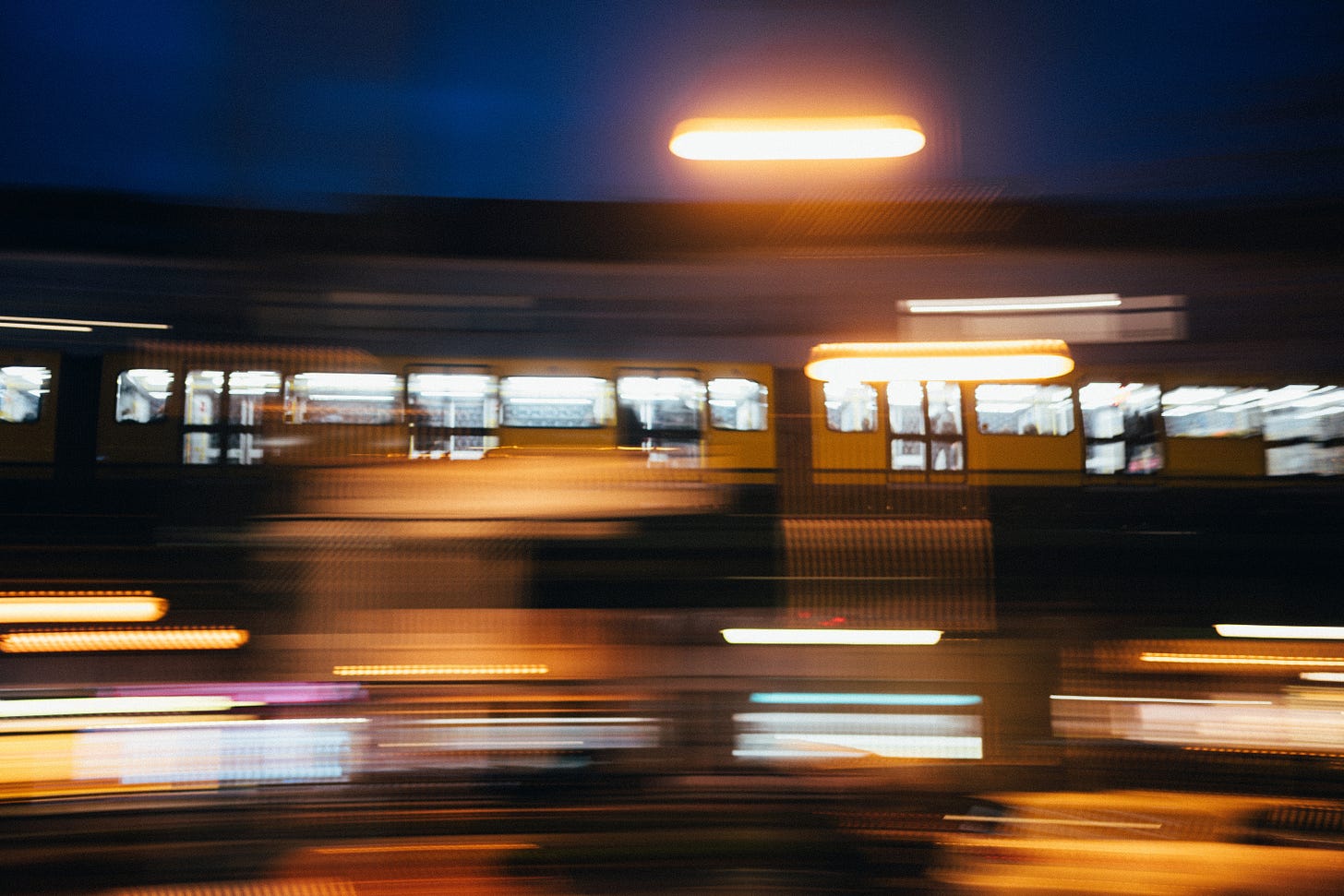


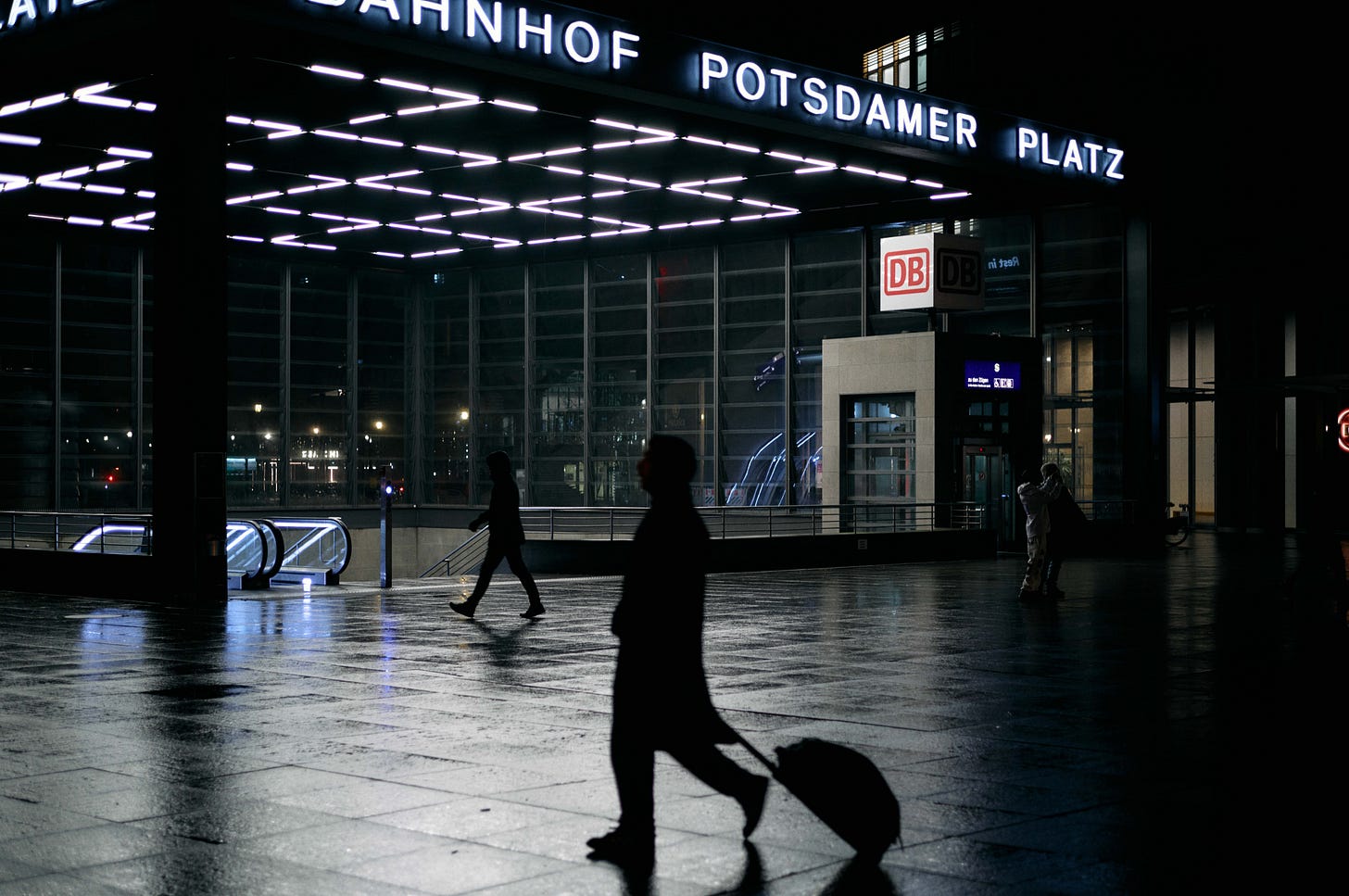


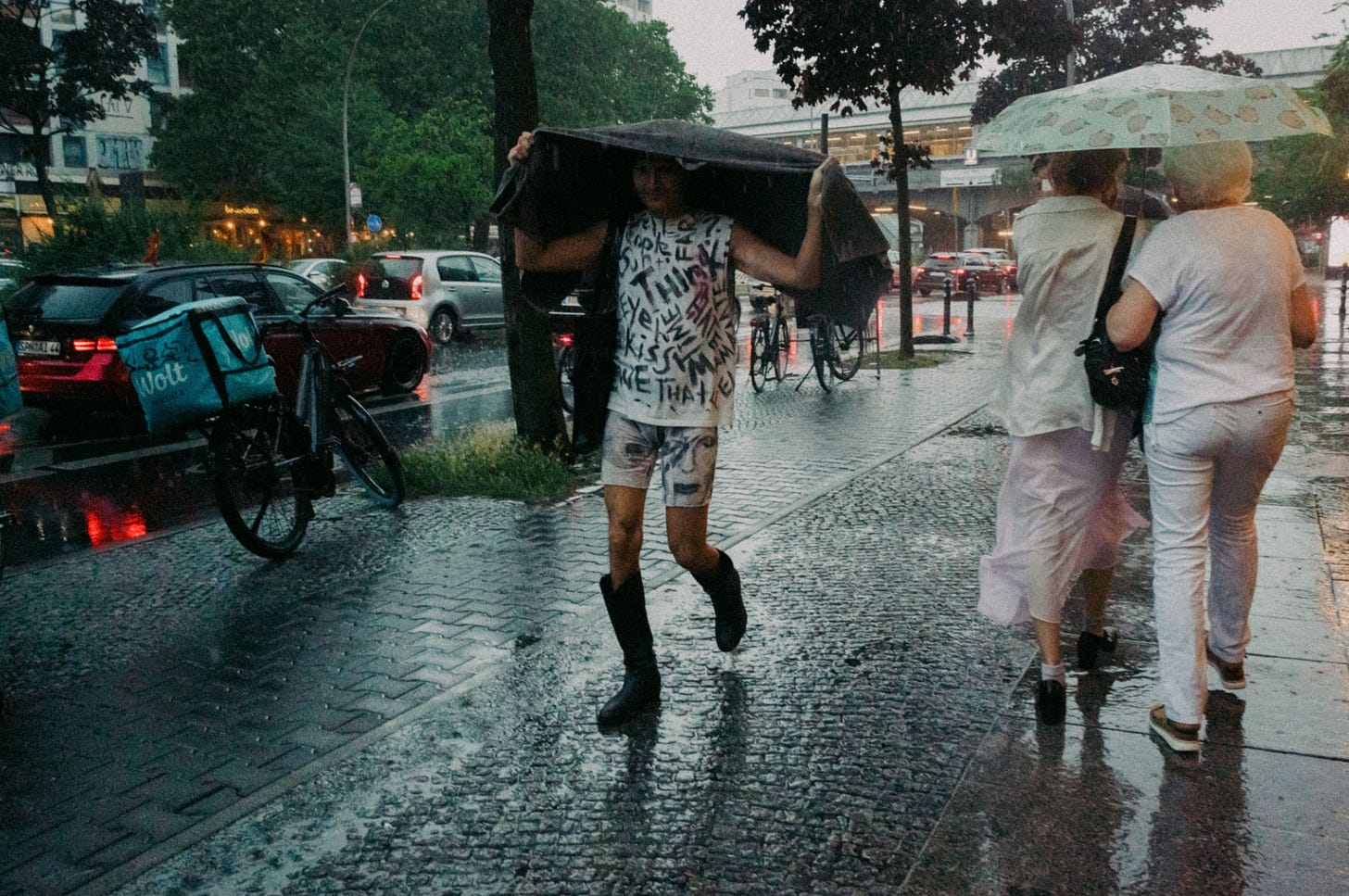








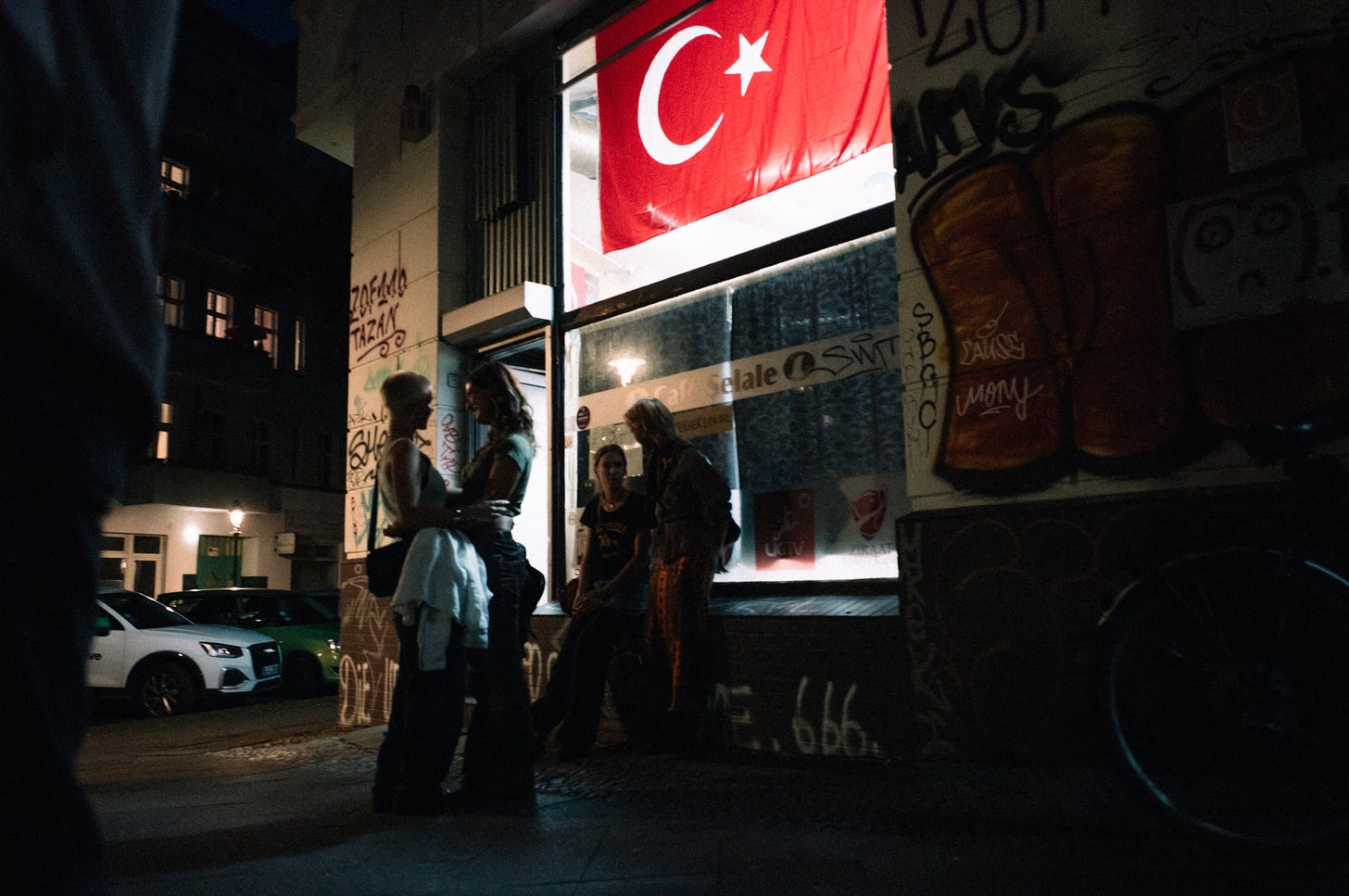
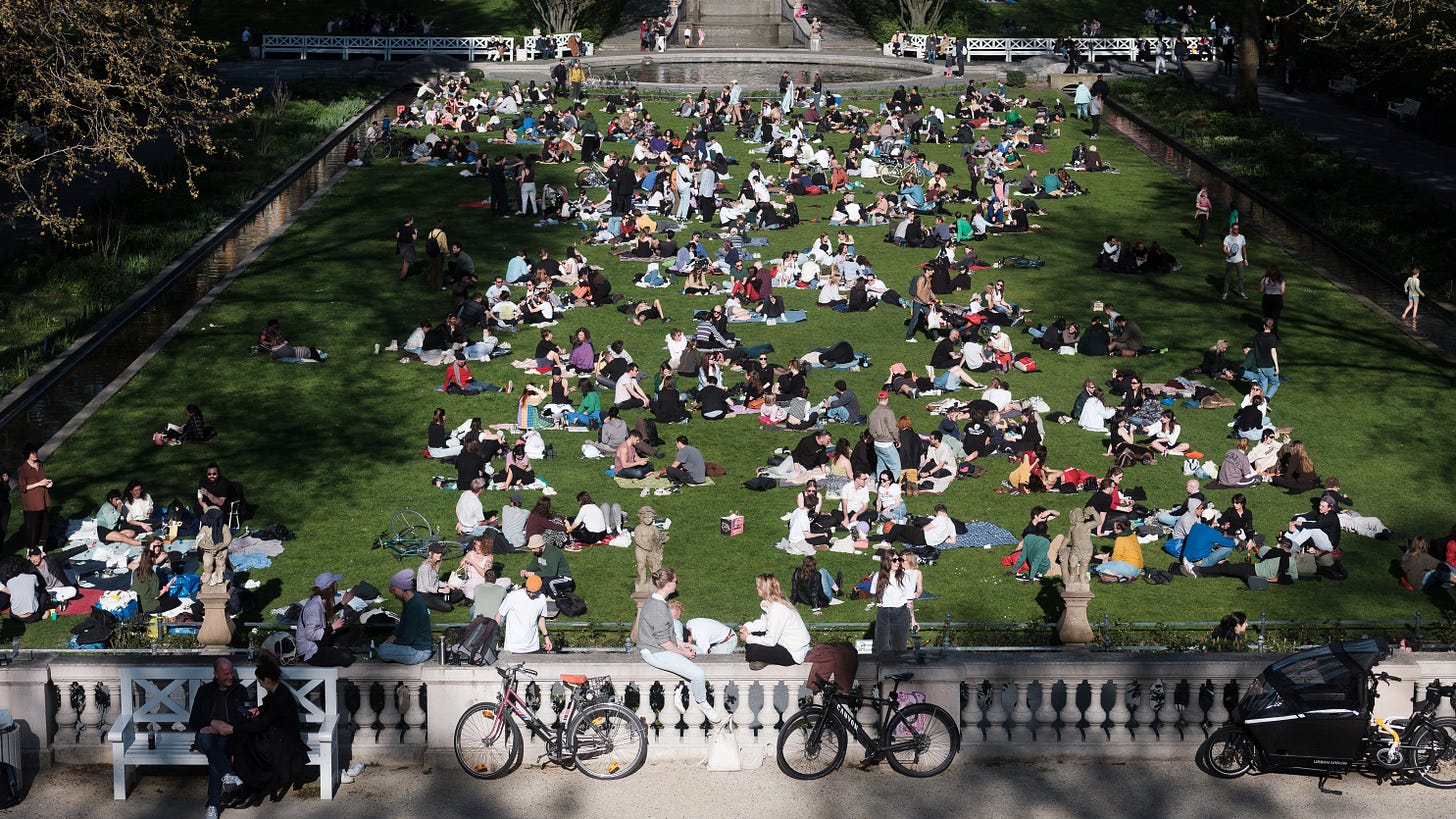
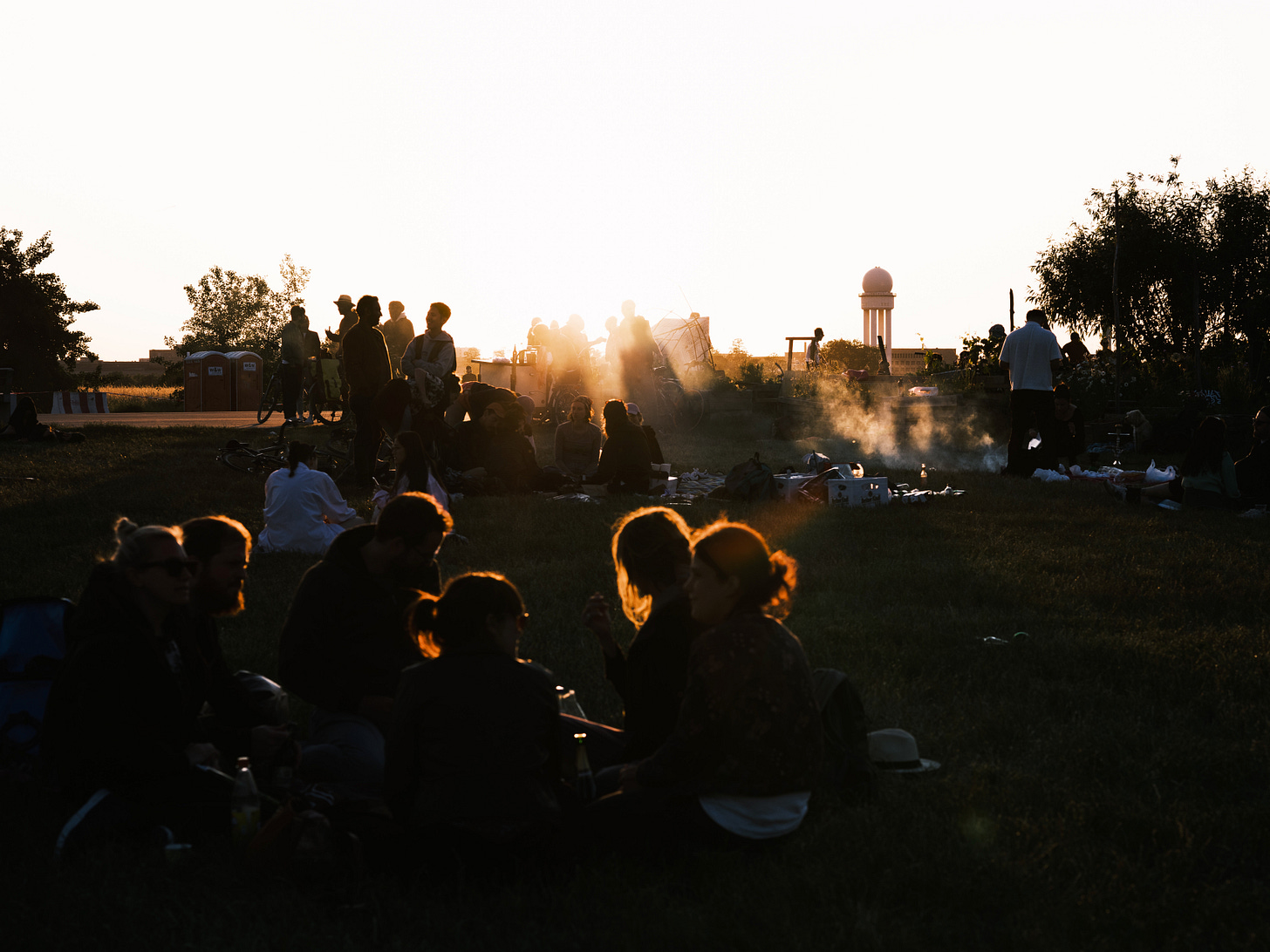


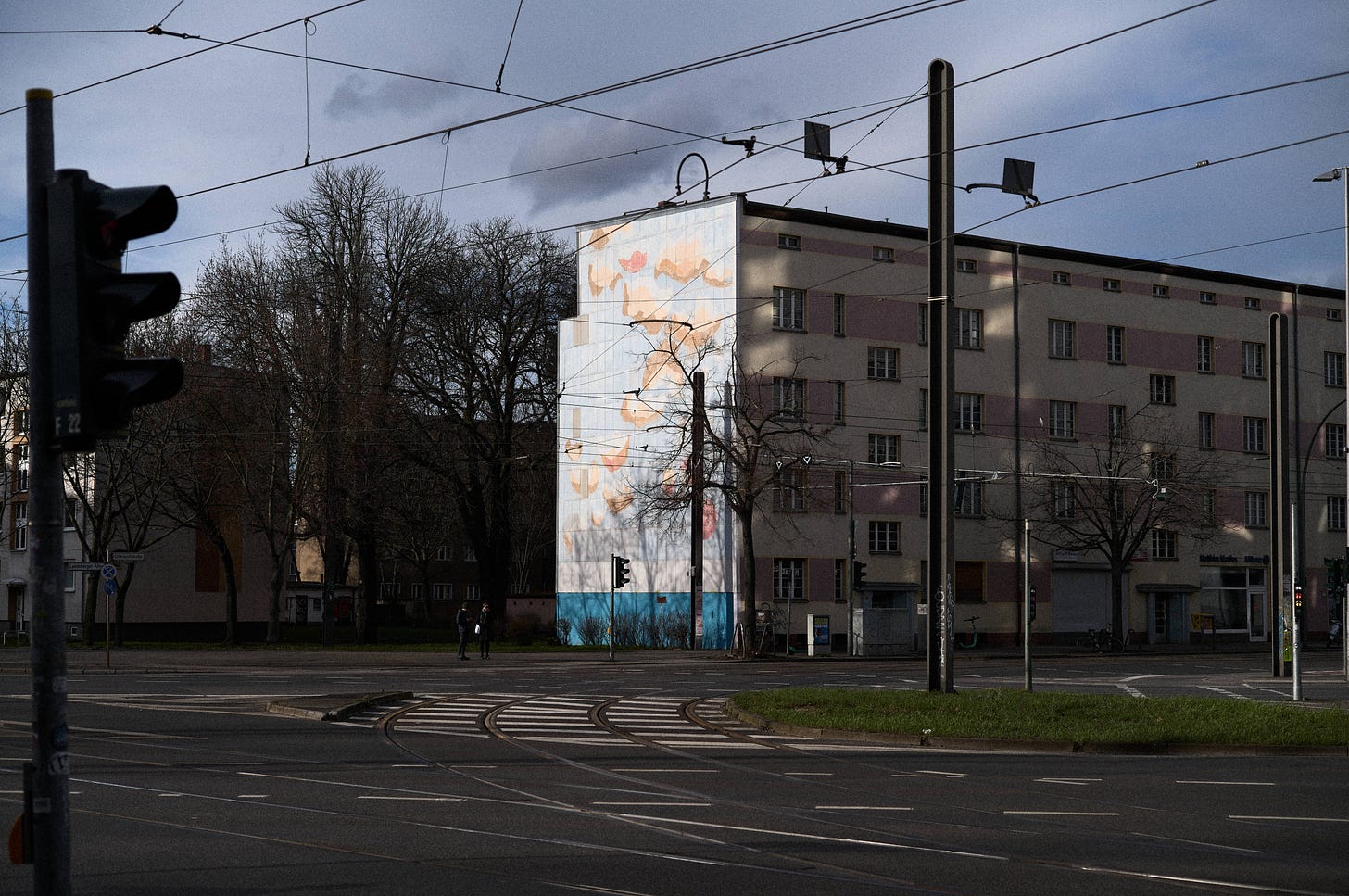
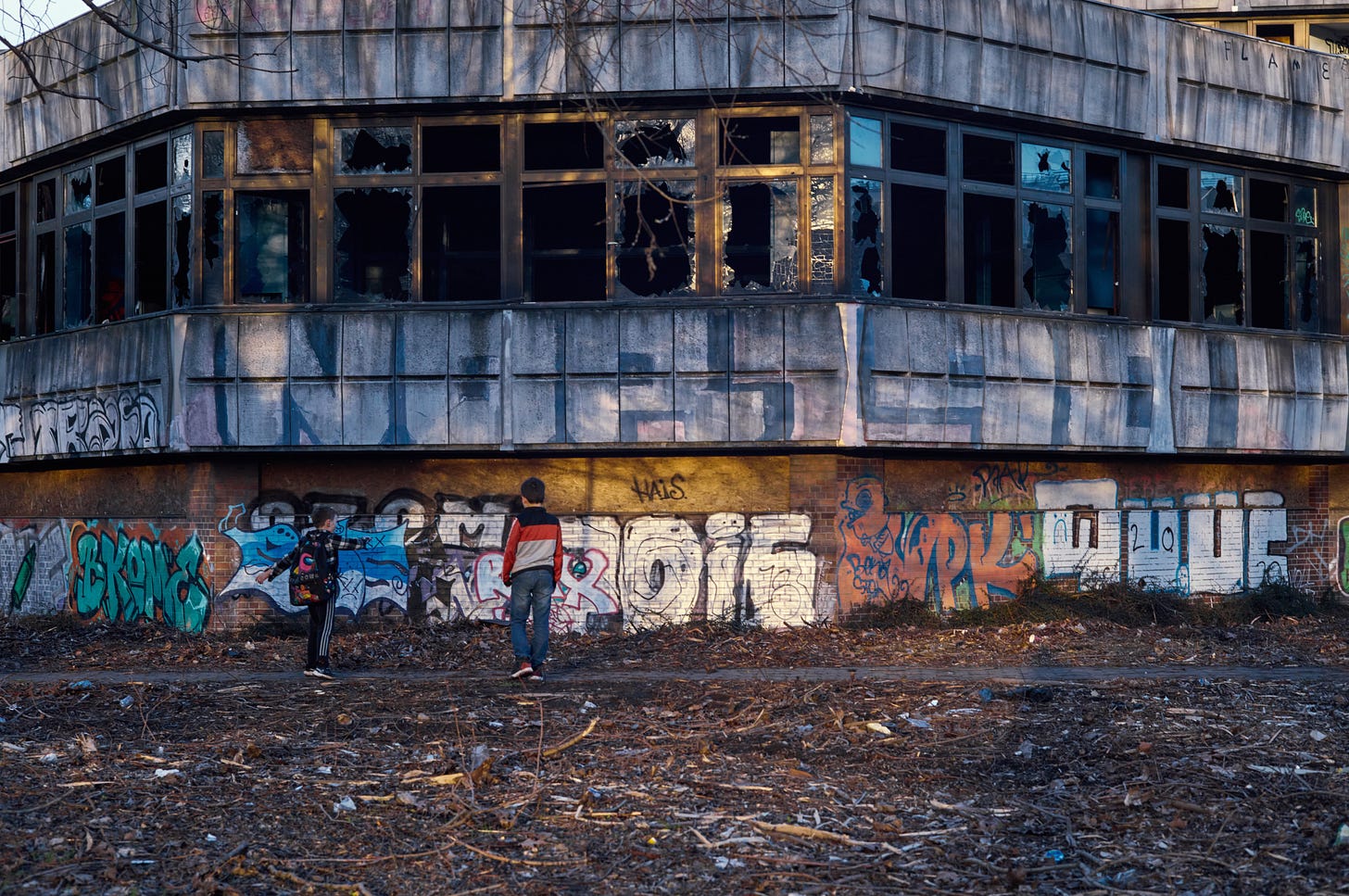




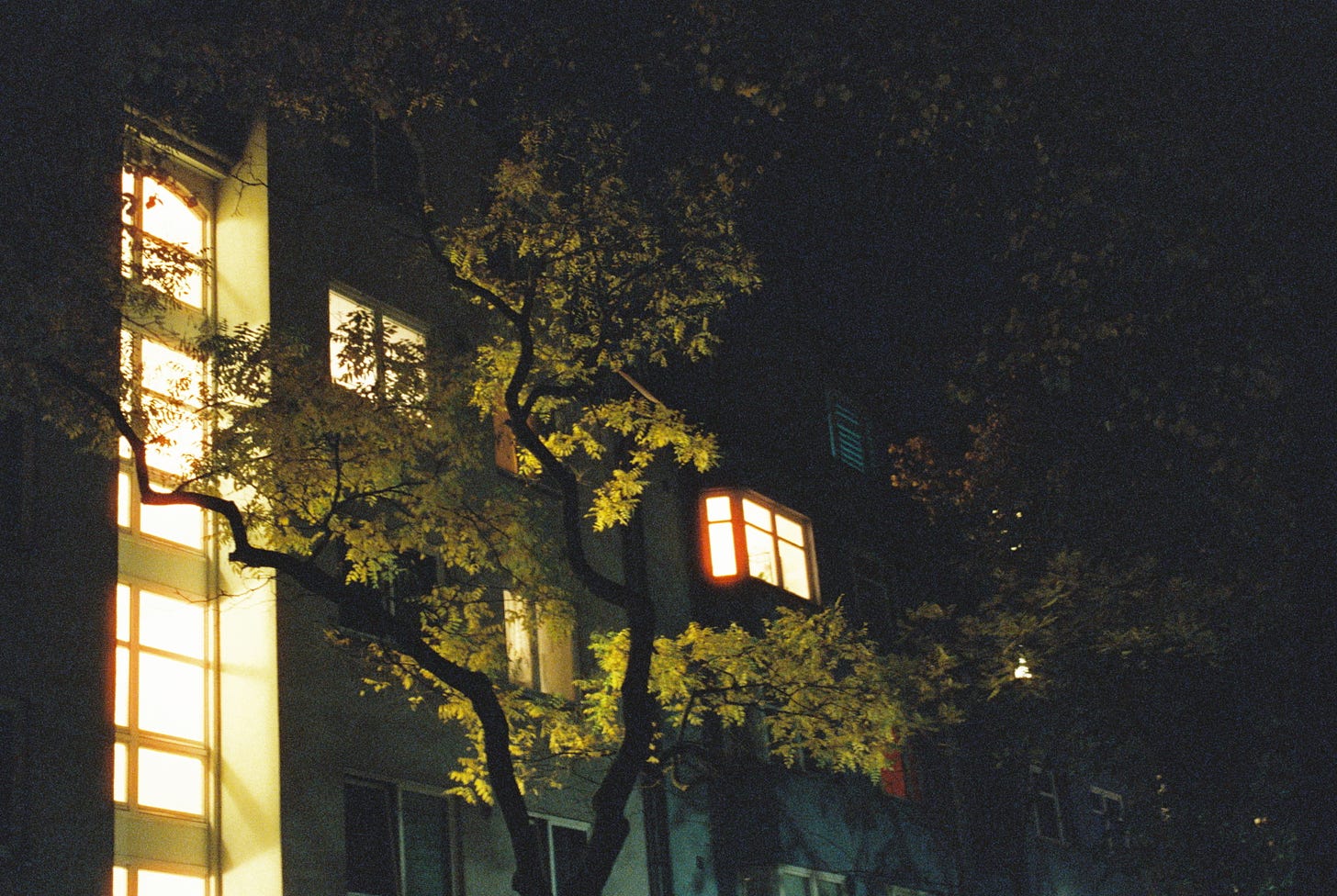
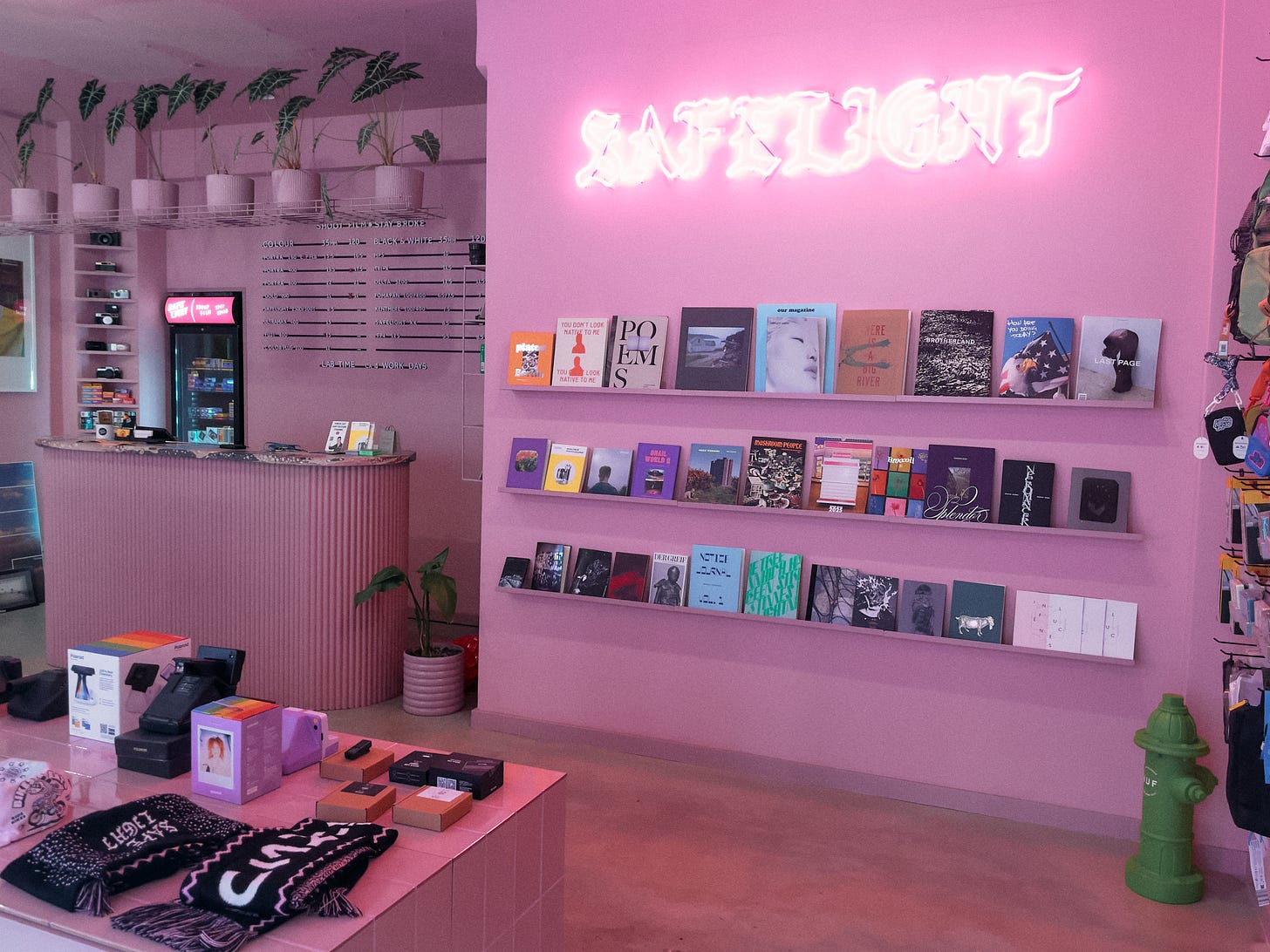


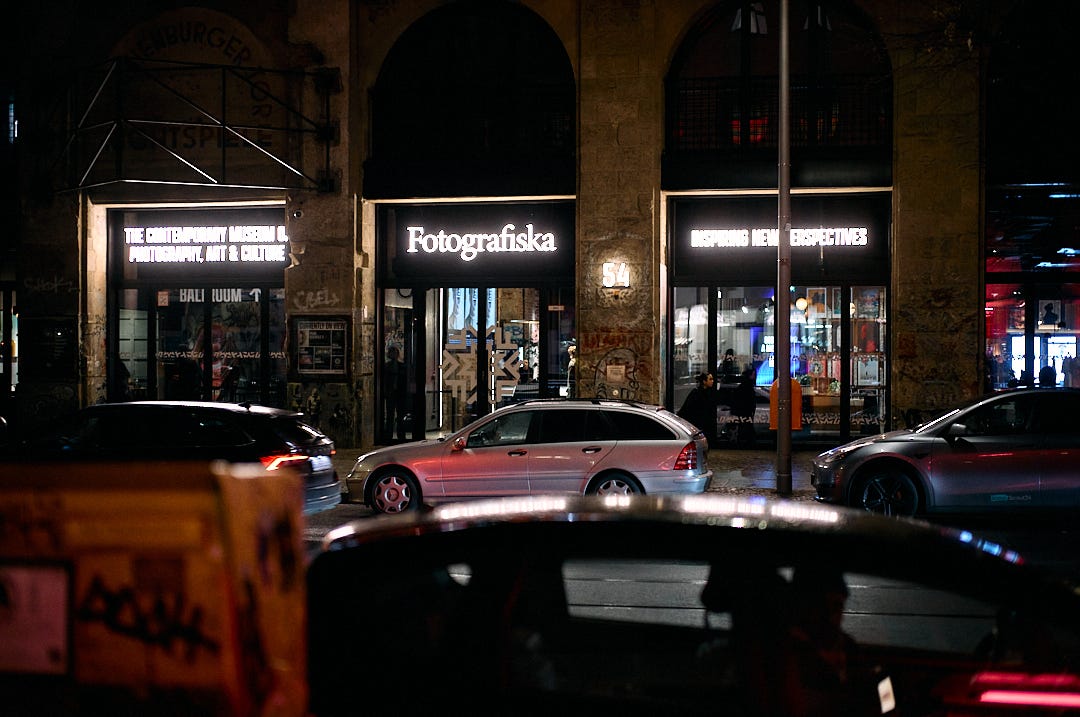

Holy shit. This is a killer way to do a guide. 🫡
Fabulous! I wish i'd had this as a guide before i visited Berlin. And who would have imagined the Stasi leadership having quaint embroidered cushions?